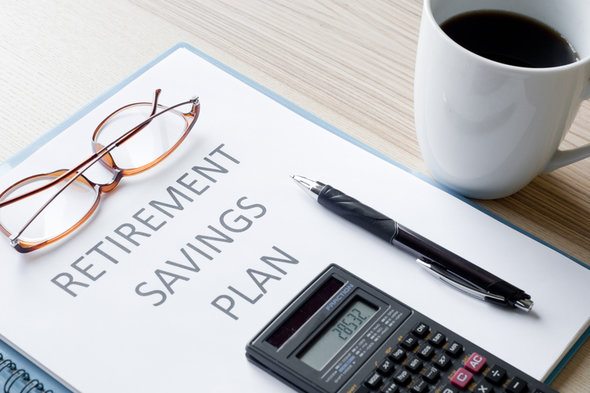Nearly half of Americans feel financially prepared for retirement, according to a 2025 study by Empower. Still, there is much you must do to prepare so you can enjoy a comfortable, financially secure retirement. Whether you are approaching retirement or are simply preparing for the future, this is how to start planning for retirement.
Regardless of your current confidence level, working with a financial advisor can help you create a retirement plan tailored to your needs and goals.
Make the Decision to Start a Retirement Plan
The hardest thing about saving for retirement is just getting started.
Most people don’t have a financial background, so it’s hard to think about things like individual retirement accounts (IRAs) or investment portfolios. It is also intimidating when you need to save hundreds of thousands of dollars for retirement – especially if you’re just getting started.
However, saving for retirement isn’t as daunting as it seems. If you start saving early, even small contributions can add up to big savings, thanks to compound interest.
Think About How Much You’ll Need In Retirement
When you think about saving for retirement, start with how much you currently spend each month. If you spend 10% of your money on clothes, there’s a good chance you’ll want to spend about that much on clothes in the future.
Also, consider your monthly bills. Many people underestimate how much money they will need to spend in retirement so they worry about running out of money during their sunset years.
That is why some financial experts, like Nicole Lapin, tell people that they should expect their retirement expenses to be at least 70% of what they are currently. That’s assuming you live very frugally. Most people will probably want to spend 70% to 90% of what they currently spend. Look at your spending habits to get an idea of what’s important to you.
Many people have specific things they want to spend money on in retirement. Maybe you want to travel, learn a language or volunteer more. Think about the lifestyle you might want to live. You should also think about where you might want to live. Many retirees move to warm, sunny locales.
Consider all these current and potential expenses. Once you have an idea of how much you’ll spend each month in retirement, you can calculate how much you’ll need in savings.
Figure Out What You Already Have
Take stock of all the money and assets that you have saved. If you’re just starting and you don’t have much, that’s fine. However, it is important to understand what you do have so you can build off it and make it work for you.
Sometimes people overlook money that they have saved in a previous employer’s 401(k). If you have money in a 401(k) account that you no longer contribute to, consider an IRA rollover. You can usually transfer the money into your current employer’s 401(k) without having to pay any taxes or fees.
You can also open an IRA and transfer the money into that account. Either way, it is important that you don’t lose the progress you’ve already made toward your retirement plan.
Look over any investments you have and make sure they align with your retirement goals. If you plan to retire in 10 years, you probably don’t want all of your savings invested in high-risk stocks, although it depends on your plan. Maybe you do have some savings that you want to invest in higher-risk stocks.
If you aren’t sure how to allocate your investments, consider getting the help of a financial advisor.
How to Save Money: Retirement Accounts

When it comes to a retirement plan, there is no single way that everyone should allocate their savings. Depending on how much you have and your goals, you might want to consider different account options or investment vehicles.
This is where a financial advisor can really help. These professionals are experts who can help you choose the best investments for your specific situation.
There are a few money-saving techniques to consider.
If your employer offers a 401(k), take advantage of it. It will allow you to grow your savings without paying income tax upfront. How much you should contribute to a 401(k) will depend on your situation.
However, if your employer offers a 401(k) match, it’s usually a good idea to contribute enough to take full advantage of the match. If your employer doesn’t offer a 401(k), you can get many of the same benefits with a traditional IRA.
Many experts also advise that people diversify their retirement savings with a Roth IRA. Unlike a traditional IRA, a Roth IRA is funded with after-tax dollars. The plus is that you don’t have to pay income tax when you withdraw the money in retirement.
Both types of IRAs can help you to reach your savings goals, but you might benefit more from one or the other. For example, people who are just starting their careers might benefit more from contributing to a Roth IRA.
2024-2026 IRS Contribution Limits
| 2026 | 2025 | 2024 | |
|---|---|---|---|
| 401(k) | Standard: $24,500 50 or older: $32,500 60-63: $35,750 | Standard: $23,500 50 or older: $31,000 | Standard: $23,000 50 or older: $30,500 |
| 403(b) | Standard: $24,500 50 or older: $32,500 60-63: $35,750 | Standard: $23,500 50 or older: $31,000 | Standard: $23,000 50 or older: $30,500 |
| SEP-IRA | $72,000 | $70,000 | $69,000 |
| SIMPLE IRA | Standard: $17,000 50 or older: $18,100 | Standard: $16,500 50 or older: $20,000 | Standard: $16,000 50 or older: $19,500 |
| 457(b) | Standard: $24,500 50 or older: $32,500 | Standard: $23,500 50 or older: $31,000 | Standard: $23,000 50 or older: $30,500 |
| Traditional IRA | Standard: $7,500 50 or older: $8,600 | Standard: $7,000 50 or older: $8,000 | Standard: $7,000 50 or older: $8,000 |
| Roth IRA | Standard: $7,500 50 or older: $8,600 | Standard: $7,000 50 or older: $8,000 | Standard: $7,000 50 or older: $8,000 |
*Retirement accounts may also be subject to total contribution limits if you contribute to multiple accounts within a year. Check with the IRS or ask a tax professional if you have questions.
Consider Risk in Your Retirement Plan
Many people invest their IRA money through the stock market, although there is always risk when you invest in the stock market.
One way to potentially minimize that risk is by choosing exchange-traded funds (ETFs) and index funds instead of just individual stocks. Funds are naturally more diverse and are less likely to lose money if the economy or stock market performs poorly.
Remember that there are options for people of all risk levels. If you have a low risk tolerance, you might want to consider something like a certificate of deposit (CD). It would earn you more than a savings account, and CDs are insured by the FDIC.
Plan for Retirement Income Sources
Saving for retirement is only one part of the process. It also helps to think about where income will come from once work stops.
Most retirees rely on a mix of sources rather than a single account. Common income sources include Social Security, employer retirement plans, IRAs, taxable investment accounts and, in some cases, pensions and annuities.
Each source follows different rules for timing, taxation and withdrawals.
- Social Security. Social Security often forms the foundation of retirement income. The age at which benefits begin affects the monthly amount received, and claiming earlier or later can change lifetime payouts.
- Employer-sponsored plans and IRAs. Employer-sponsored plans and IRAs typically supplement Social Security by covering ongoing expenses or larger, irregular costs.
- Taxable investment accounts. Taxable investment accounts may offer added flexibility since withdrawals are not tied to age-based rules in the same way.
The order in which income sources are used can affect cash flow and taxes over time.
Some retirees draw from taxable accounts first while allowing tax-advantaged accounts to continue growing. Others use a combination approach to keep income more consistent year to year. Also, required minimum distributions (RMD) from certain accounts later in retirement may also shape how income is managed.
Healthcare and housing costs often influence income planning, as well. Medical expenses may rise with age, and housing needs can shift over time.
Accounting for these variables alongside income sources helps align savings with spending patterns throughout retirement, rather than focusing only on account balances.
Bottom Line

A retirement plan can help ensure that you have enough retirement savings to live the life you want after you stop working. If you want to put yourself on the path to retirement success, start saving now. It doesn’t matter how old you are or how much you’ve already saved. There are multiple retirement accounts available, and the best one(s) for you will depend on your particular situation. No matter what your retirement plan looks like, stick to it! Make saving a priority, and don’t let small mistakes or unexpected challenges derail your plan.
Consult a financial advisor if you need help deciding how to allocate your savings.
Tips for Creating Your Retirement Plan
- A financial advisor can help you take care of your finances when you’re retired. SmartAsset’s free tool matches you with vetted financial advisors who serve your area, and you can interview your advisor matches at no cost to decide which one is right for you. If you’re ready to find an advisor who can help you achieve your financial goals, get started now.
- Are you self-employed? You won’t have access to a 401(k) but don’t let that be an excuse to put off retirement savings. You can still save by opening a SEP-IRA. A SEP-IRA is relatively easy to set up and has flexible rules on annual contributions.
- No matter what kind of retirement account you contribute to, make sure you’re aware of the annual contribution limits. Note that IRAs also have higher “catch-up” limits for people who are above a certain age. For example, the contribution limit for a traditional IRA in both 2024 and 2025 is $7,000 if you are under age 50. The limit jumps to $8,000 if you’re 50 or older. That means even if you started saving late, you can make up a little bit thanks to the higher contribution limit.
- It can be a challenge to save for retirement if you don’t earn a lot of money. However, there are a few incentives to help individuals and couples with a low or moderate income. One to take advantage of is the the Saver’s Tax Credit. It allows eligible filers to receive a tax credit of up to 50% of their retirement savings.
Photo credit: ©iStock.com/courtneyk, ©iStock.com/PeopleImages, ©iStock.com/c-George
